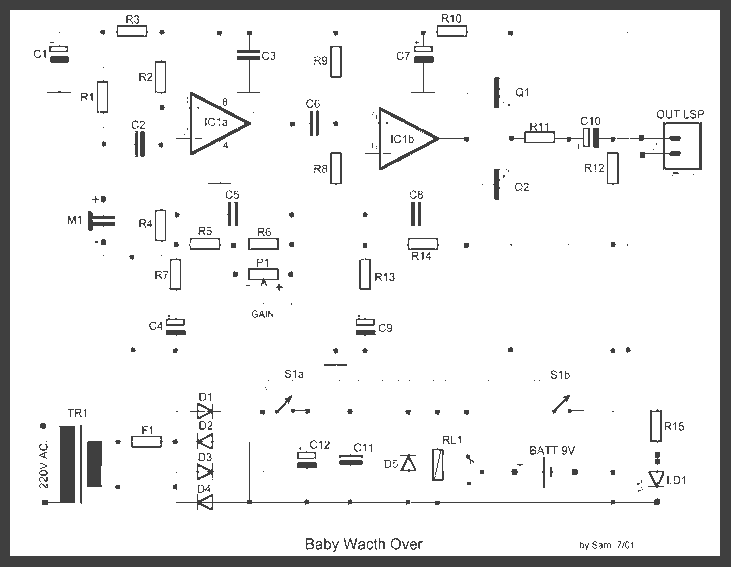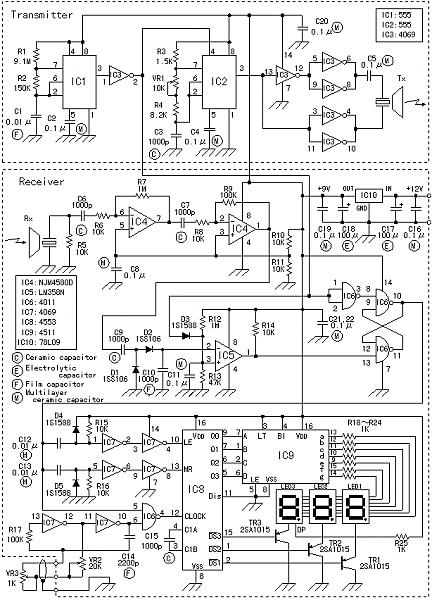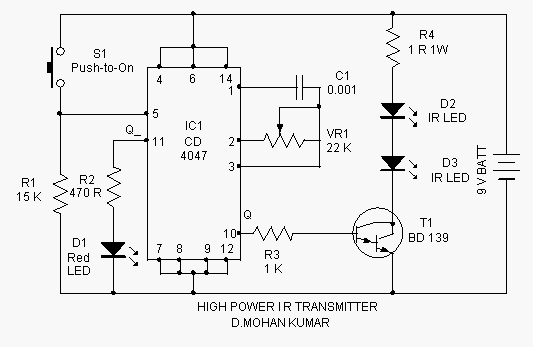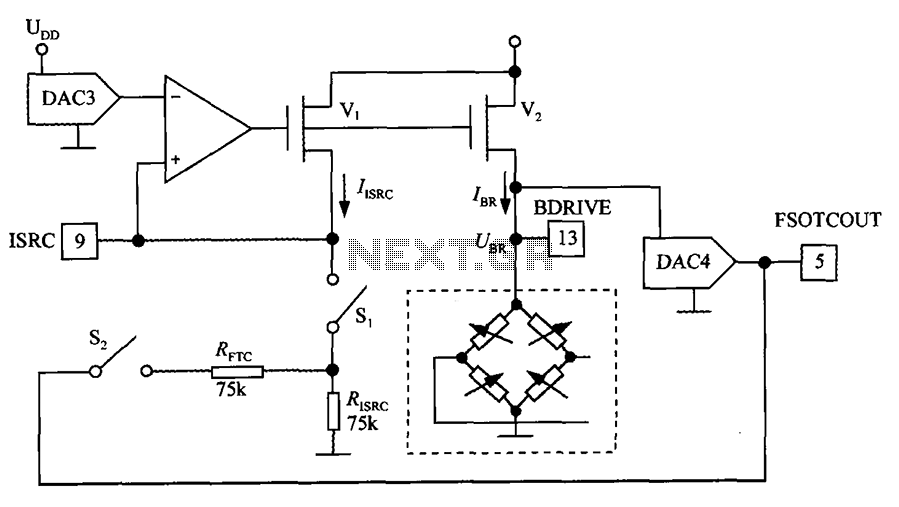
Remote-Control Transmitter Circuit
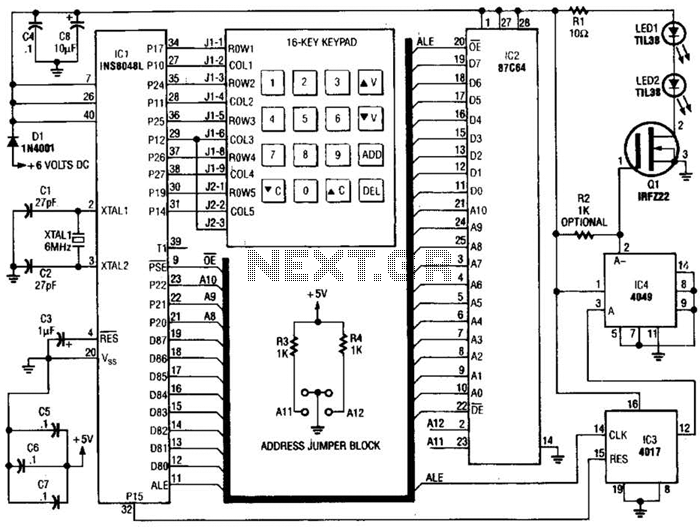
This transmitter emits an FM signal within the 88 to 108 MHz frequency range, featuring a tone of 19 kHz. This tone can activate the FM MPX pilot carrier indicator, allowing interfacing with external devices. L4 is designed for use with a 15 cm wire antenna. L1 consists of 9 turns of #26 enameled wire wound around a 54-ohm, 10-kΩ carbon resistor, while L2 is formed by 2 turns wound over L1. Additionally, L3 comprises 7 turns of #26 enameled wire on a 10-kΩ, ¼-W resistor.
The described FM transmitter circuit operates within the standard FM broadcast band, specifically designed to transmit signals that can be received by standard FM radios. The 19 kHz tone is significant as it serves as a pilot tone for multiplexing, which is essential for stereo FM broadcasting. This pilot tone enables the receiver to recognize the presence of a stereo signal, thus activating the stereo decoder circuitry in compatible receivers.
The antenna (L4) is optimized for the 15 cm length, which is crucial for efficient transmission at the specified frequency range. The choice of wire gauge, #26, provides a balance between flexibility and resistance, ensuring that the inductors maintain their intended inductance values without excessive losses.
Inductor L1 is constructed with 9 turns of enameled wire, which helps form a resonant circuit in conjunction with the carbon resistor. The 54-ohm resistor is selected to match the impedance of the circuit, optimizing power transfer and minimizing reflections. L2, being only 2 turns wound over L1, serves as a coupling inductor that enhances the signal transfer between stages of the circuit.
Inductor L3, with 7 turns of #26 enameled wire on a 10-kΩ, ¼-W resistor, plays a role in filtering or further modifying the signal characteristics. The choice of a carbon resistor for L1 and L3 indicates a preference for stability and reliability in the circuit's performance.
Overall, this circuit design highlights the importance of careful component selection and configuration in achieving a functional FM transmitter capable of interfacing with external devices and providing high-quality signal transmission within the FM band. This transmitter sends an FM signal in the 88-to 108-MHz range, with a tone of 19 kHz. This can be used to activate the FM MPX pilot carrier indicator, which can be interfaced to external devices. L4 is for use with a 15 CM wire antenna. LI is 9 turns of #26 enamelled wire on a 54-W 10-kQ resistor (carbon type), L2 is 2 turns wound over LI.
L3 is 7 turns of #26 enamelled wire on a 10-ka /4-W resistor. 🔗 External reference
The described FM transmitter circuit operates within the standard FM broadcast band, specifically designed to transmit signals that can be received by standard FM radios. The 19 kHz tone is significant as it serves as a pilot tone for multiplexing, which is essential for stereo FM broadcasting. This pilot tone enables the receiver to recognize the presence of a stereo signal, thus activating the stereo decoder circuitry in compatible receivers.
The antenna (L4) is optimized for the 15 cm length, which is crucial for efficient transmission at the specified frequency range. The choice of wire gauge, #26, provides a balance between flexibility and resistance, ensuring that the inductors maintain their intended inductance values without excessive losses.
Inductor L1 is constructed with 9 turns of enameled wire, which helps form a resonant circuit in conjunction with the carbon resistor. The 54-ohm resistor is selected to match the impedance of the circuit, optimizing power transfer and minimizing reflections. L2, being only 2 turns wound over L1, serves as a coupling inductor that enhances the signal transfer between stages of the circuit.
Inductor L3, with 7 turns of #26 enameled wire on a 10-kΩ, ¼-W resistor, plays a role in filtering or further modifying the signal characteristics. The choice of a carbon resistor for L1 and L3 indicates a preference for stability and reliability in the circuit's performance.
Overall, this circuit design highlights the importance of careful component selection and configuration in achieving a functional FM transmitter capable of interfacing with external devices and providing high-quality signal transmission within the FM band. This transmitter sends an FM signal in the 88-to 108-MHz range, with a tone of 19 kHz. This can be used to activate the FM MPX pilot carrier indicator, which can be interfaced to external devices. L4 is for use with a 15 CM wire antenna. LI is 9 turns of #26 enamelled wire on a 54-W 10-kQ resistor (carbon type), L2 is 2 turns wound over LI.
L3 is 7 turns of #26 enamelled wire on a 10-ka /4-W resistor. 🔗 External reference
